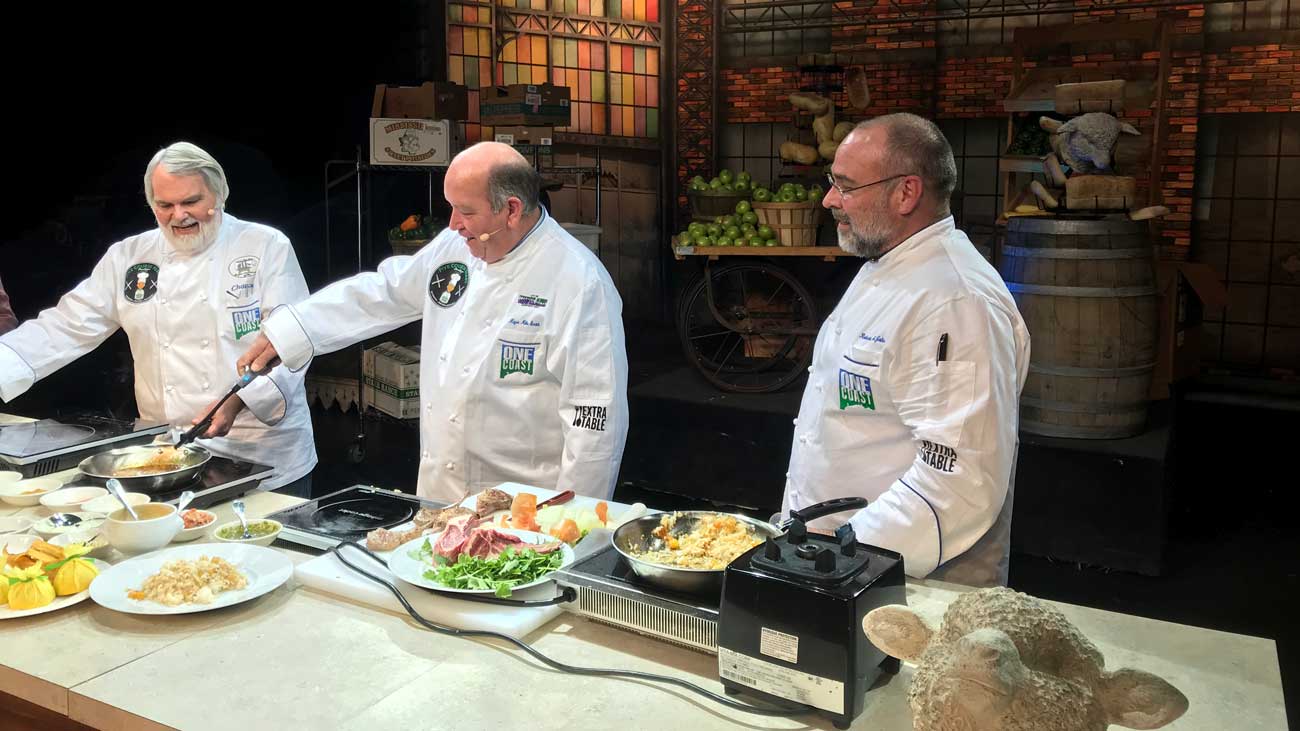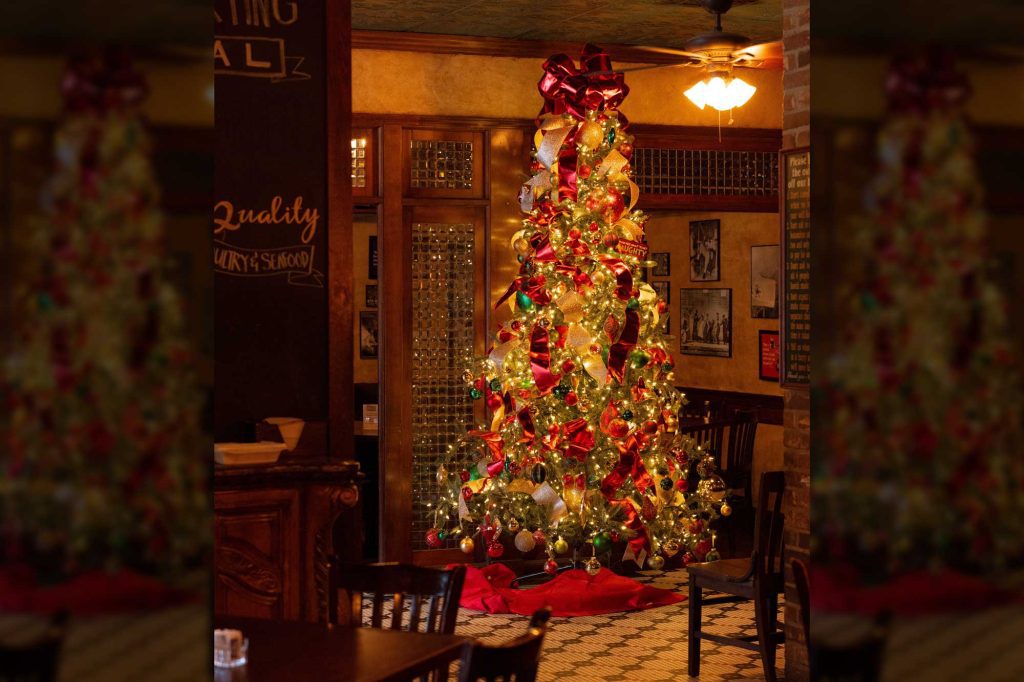Food development is fluid. Many times a new dish starts as one thing and ends up being something entirely different.
I was working on a baked crabmeat dish 15 years ago hoping to offer a feature that was a light take on crabmeat au gratin, except very easy on the cheese. I developed a dish that I was so happy with I named it after my two-year old daughter— Crabmeat Holleman.
We ran Crabmeat Holleman as an au gratin feature and then later stacked it on croutons for a Napoleon-type appetizer. Today we top crab cakes with Crabmeat Holleman and offer it as stuffed crab cakes— crab on crab stuffed with more crab— what’s not to like.
A go-to holiday dish at my house is my wife’s sweet potato casserole. It’s very sweet and topped with pecans and walnuts instead of marshmallows. I serve it alongside turkey, dressing, and the obligatory green bean casserole. One of my chefs had some leftover sweet potato casserole in her refrigerator at home and served it to her husband as a dessert. She came in the next day and said, “I’ve got a great idea for a new dessert feature,” and sweet potato cobbler was born.
That’s how it works. Something starts as one thing and becomes an entirely different thing. Nowhere is that concept more evident than with one of— if not— the most popular desserts we’ve ever offered in any of our restaurants— King Cake Bread Pudding.
I don’t even remember the origin of this dessert. I would like to take credit for creating one of the most talked about and requested items we’ve ever sold, but I can’t remember if it was my idea or one of our chef’s. Whoever came up with it, they deserve a bonus.
Once every week, on Tuesdays, I meet with all of the chefs and kitchen managers. We discuss upcoming food features, previous features and how they were received, and discuss the creation of new dishes to be developed for the upcoming weeks. The King Cake Bread Pudding meeting probably went something like this:
“Mardi Gras season is coming up, we need to do a few seasonal features.”
“Crawfish is too expensive right now and they’re small, so that’s out.”
“Soft-shell crabs are sporadic. We’re not getting enough in on a daily basis to feature them”
“There aren’t a lot of fresh, seasonal options for us in February. What about a dessert?”
“I’ve got some king cake leftover from that catering gig yesterday.”
“We can’t just offer king cake as a dessert. That’s something people go to the store to buy.”
“Why don’t we make a bread pudding out of it, kind of like we did with those chocolate croissants, but using the White Chocolate Bread Pudding recipe as inspiration.”
“Brilliant!” That’s the only word in that conversation that I know— for sure— would have been spoken by me. Whether I was referring to myself, or one of my other chefs, it really doesn’t matter. Whoever came up with that idea is a food development legend around here and should be on some type of feature-creator’s hall-of-fame plaque on the wall of our kitchen if we had that sort of thing.
King Cake Bread Pudding would probably be in the top 10 all-time most-requested, most-talked-about features in our last 26 years. Seeing as we offer six to eight new features every week that would put King Cake Bread Pudding in the top 10 of over 8,000 feature offerings through the years. Not too shabby.
For those few readers who might have grown up in North Dakota and have no idea what a King Cake is, it’s a braided dough— usually brioche—filled with cream cheese or fruit, topped with sugar. There is a small trinket inside (usually a plastic baby) that has many different meanings for the one who finds it, depending on who you are talking to and where they live.
So what did we learn today, children? It’s always good to be open to new ideas and new concepts. One never knows when a casual conversation might start a firestorm of creativity that will have long-lasting implications. Something in its original form might be even better in a re-invented form. It works for caterpillars and butterflies and it works for King Cakes, too.
KING CAKE BREAD PUDDING
2 cups milk
2 cups heavy whipping cream
3/4 cup sugar, divided
4 egg yolks
8 eggs
2 tsp vanilla
1/8 tsp salt
1 tsp cinnamon
1 8-10” round cream cheese filled King Cake
Place the milk, cream and half of the sugar in a small sauce pot and place over medium heat. Bring this mixture to a simmer, stirring occasionally to prevent the sugar from burning. While the milk mixture is heating, place the remaining sugar, egg yolks, whole eggs, vanilla and salt into a stainless steel mixing bowl. Using a wire whisk, beat the egg mixture until it become light yellow in color. Slowly begin adding the hot milk to the beaten eggs, whisking constantly to prevent the eggs from cooking.
Cut the King Cake into two inch thick slices.
Pour half of the custard into a two-quart round Pyrex baking dish (nine-inch diameter).
Submerge the King cake slices into the custard. Pour the remaining custard over the top and cover the baking dish. Cover and refrigerate over night.
Preheat oven to 325 degrees.
Remove the covering from the refrigerated bread pudding and gently press down the King Cake so that the custard completely covers the surface. Cover the bread pudding with a piece of parchment paper, and then cover the paper with a piece of aluminum foil.
In a roasting pan large enough to hold the Pyrex dish, place two inches of hot water. Place the Pyrex dish in the water and bake for 40 minutes. Remove the foil and parchment paper and bake for 10 additional minutes.
Remove from the oven and allow the pudding to rest for one hour before serving.
Garnish with sugar that has been colored with purple, green, and gold food coloring and serve with Brandy Crème Anglaise
Yields 8-10 servings
Brandy Crème Anglaise
1 cup cream
1/2 cup half and half
1/4 cup brandy
3/4 cup sugar, divided
4 egg yolks
1 tsp vanilla extract
In a stainless steel pot bring the cream, half and half, brandy, half of the sugar and to vanilla a simmer. While it is heating, combine the yolks and remaining sugar in a mixing bowl and whip until pale yellow in color.
Slowly begin adding the cream mixture into to yolks, stirring constantly until all the milk has cream mixture has been added. Pour the mixture back into the sauce pot and cook over a low-medium flame stirring constantly. Cook until the mixture becomes thick enough to coat a spoon or spatula.
Remove from the heat and cool down in an ice bath.
This sauce may be made two-three days in advance.
Yields : 8-10 servings



